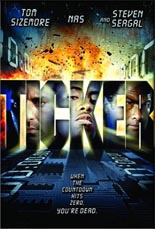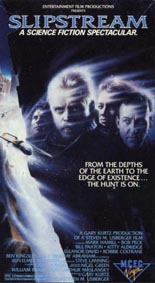
 From Tron director Steven Lisberger slips Slipstream, which boasts an “all-star cast” of Mark Hamill, F. Murray Abraham, Ben Kingsley and Bill Paxton. It tries fairly hard, but can’t make the “science fiction spectacular” a movie that sits comfortably in one’s head.
From Tron director Steven Lisberger slips Slipstream, which boasts an “all-star cast” of Mark Hamill, F. Murray Abraham, Ben Kingsley and Bill Paxton. It tries fairly hard, but can’t make the “science fiction spectacular” a movie that sits comfortably in one’s head.
Its story takes place in a post-something future in which cyborgs, bounty hunters and lowlifes symbiotically abide. There’s a “slipstream” or something, that somehow is supposed to indicate that the world and nature are out of sorts. A lot of scenes are thrown in that appear to be there to enhance characters, provoke emotion and induce laughs, yet none of them succeed.
 Plus, there’s dialogue intended to make Paxton (Twister) the folksy, down-to-earth, Han Solo-type with whom we can all identify. After one of many awkward exchanges between his character and one of the female bounty hunters, he sarcastically quips, “The hospitality of women never ceases to amaze me.” What does that mean? That women are never hospitable? Has the gesture of hospitality always eluded Paxton in his dealings with women, thereby warranting such a response? No one knows!
Plus, there’s dialogue intended to make Paxton (Twister) the folksy, down-to-earth, Han Solo-type with whom we can all identify. After one of many awkward exchanges between his character and one of the female bounty hunters, he sarcastically quips, “The hospitality of women never ceases to amaze me.” What does that mean? That women are never hospitable? Has the gesture of hospitality always eluded Paxton in his dealings with women, thereby warranting such a response? No one knows!
Additional scenes and snippets make no sense, including a dancing (that’s right, dancing!) scene in which the male cyborg learns to love life, as well as some anonymous female character. It’s supposed to make our hearts swell and eyes tear. I think I held up my middle finger until the scene was over.
With nothing to work with but a beard, Star Wars vet Hamill actually acts fairly unshittily, but Slipstream is quite a mess. I surprised myself by sitting through it until the end. —Richard York


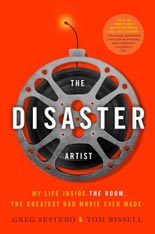
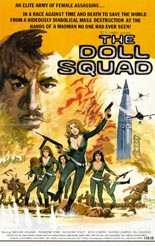
 After an American rocket is blown to smithereens shortly after launch, an IBM computer so big that it fills a room suggests the “most capable” persons to call upon in this time of government crisis would be …
After an American rocket is blown to smithereens shortly after launch, an IBM computer so big that it fills a room suggests the “most capable” persons to call upon in this time of government crisis would be … 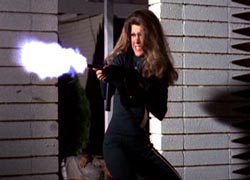
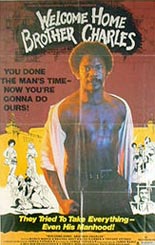
 I have seen a lot of crazy shit in my life, but nothing prepared me for the utter insanity of
I have seen a lot of crazy shit in my life, but nothing prepared me for the utter insanity of 
